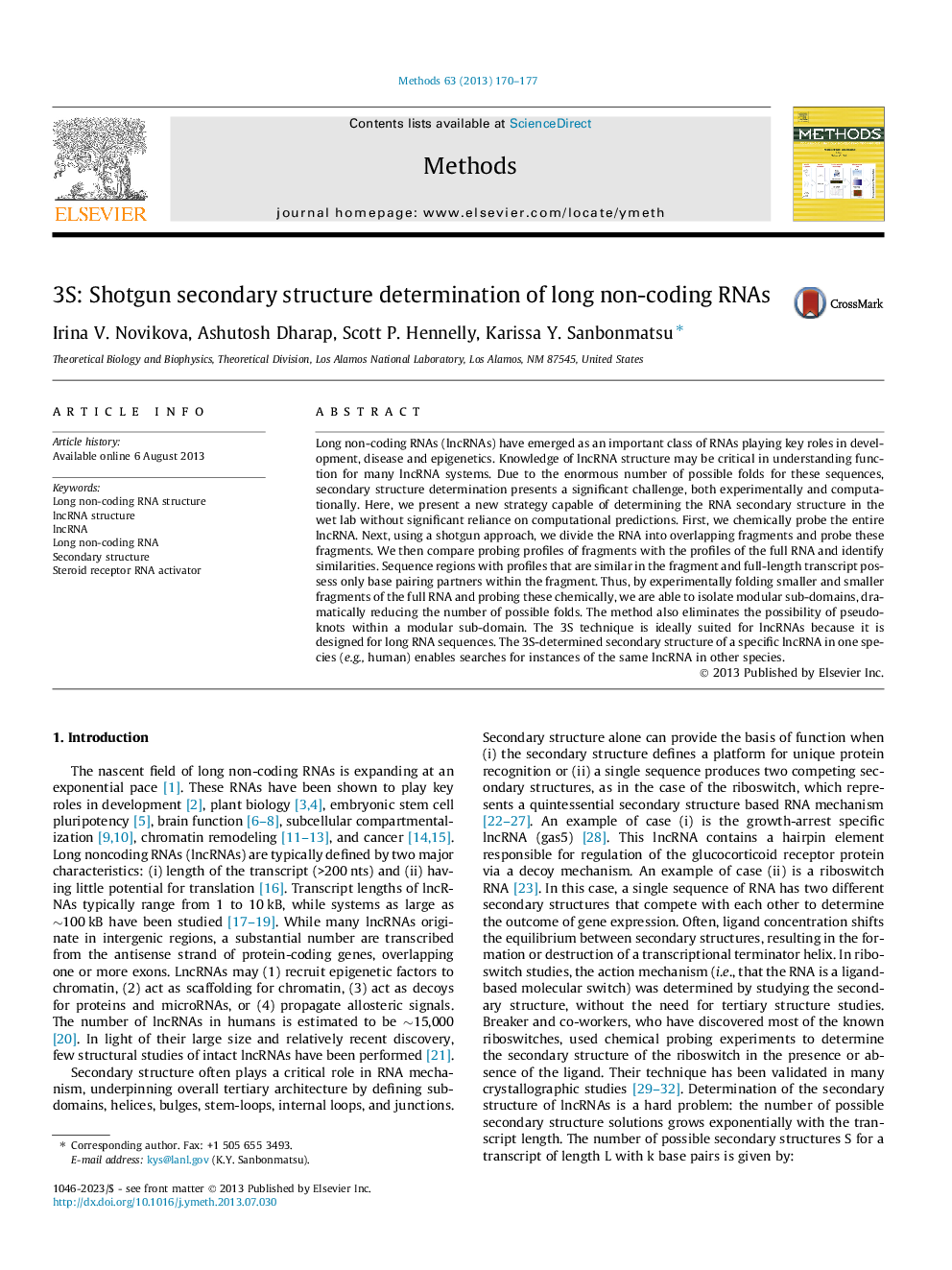| Article ID | Journal | Published Year | Pages | File Type |
|---|---|---|---|---|
| 1993495 | Methods | 2013 | 8 Pages |
Long non-coding RNAs (lncRNAs) have emerged as an important class of RNAs playing key roles in development, disease and epigenetics. Knowledge of lncRNA structure may be critical in understanding function for many lncRNA systems. Due to the enormous number of possible folds for these sequences, secondary structure determination presents a significant challenge, both experimentally and computationally. Here, we present a new strategy capable of determining the RNA secondary structure in the wet lab without significant reliance on computational predictions. First, we chemically probe the entire lncRNA. Next, using a shotgun approach, we divide the RNA into overlapping fragments and probe these fragments. We then compare probing profiles of fragments with the profiles of the full RNA and identify similarities. Sequence regions with profiles that are similar in the fragment and full-length transcript possess only base pairing partners within the fragment. Thus, by experimentally folding smaller and smaller fragments of the full RNA and probing these chemically, we are able to isolate modular sub-domains, dramatically reducing the number of possible folds. The method also eliminates the possibility of pseudoknots within a modular sub-domain. The 3S technique is ideally suited for lncRNAs because it is designed for long RNA sequences. The 3S-determined secondary structure of a specific lncRNA in one species (e.g., human) enables searches for instances of the same lncRNA in other species.
